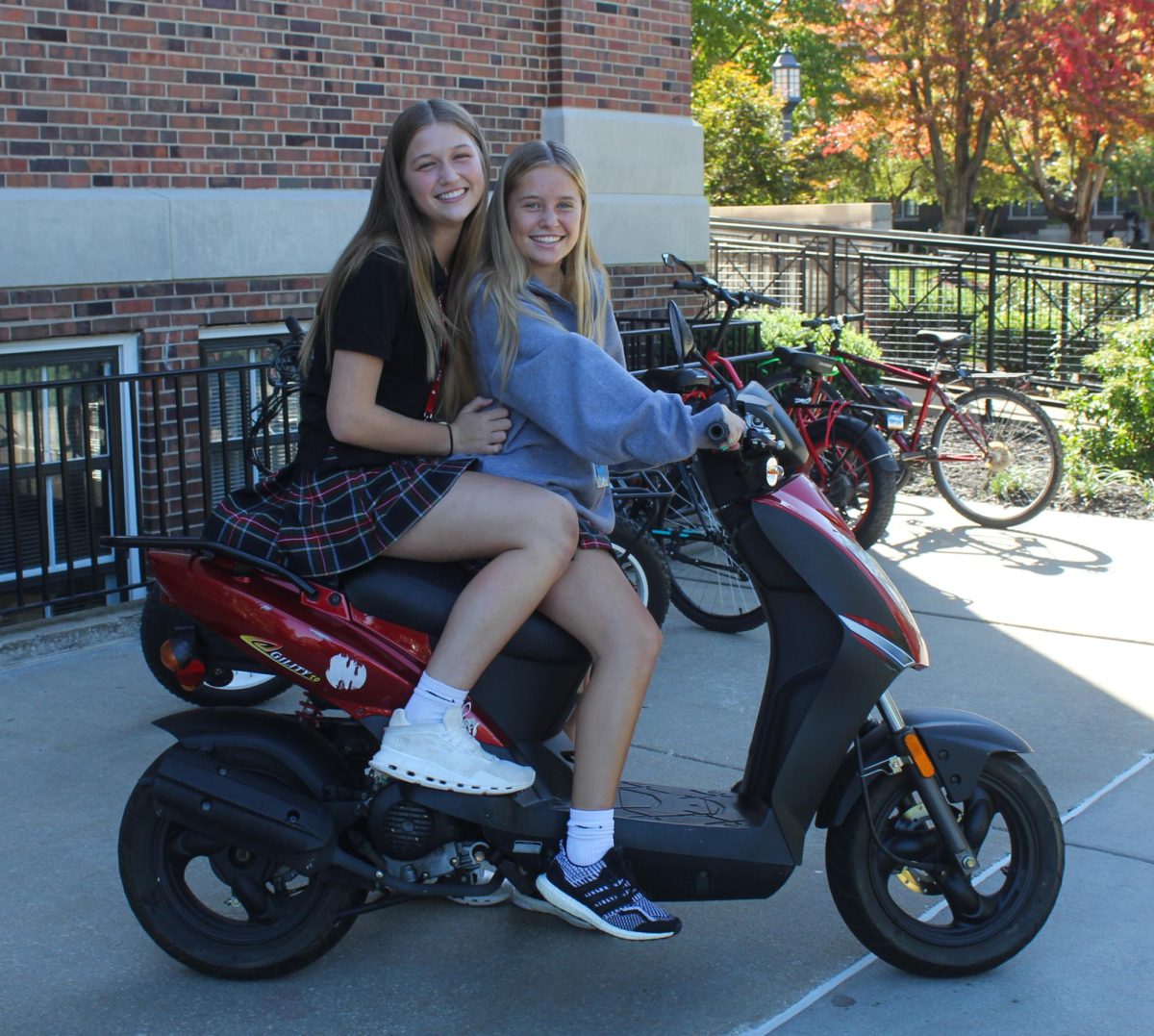As STA students returned to campus this fall, the chaos of the new school year paled in comparison to the crowded, crazy conditions that constitute the St. Teresa’s parking lot. Freshmen drop-offs, new junior drivers and scrambling seniors all coexist in the beloved lot, narrowly escaping accidents on the daily. Yet as much as gas-guzzling vehicles and fresh driver’s licenses dominate the St. Teresa’s campus, there’s a small, growing population changing the status quo: bikers.
Rather than searching for a ride this fall, freshman Dory Hodes began driving her family’s moped to school, a decision she regards with no regret.
“It’s so fun; I get to see people that I know every time I’m driving,” Hodes said. “Getting to and from school is also so much easier, since I don’t have to park in the lot.”
Freshman Evelyn Batz opts out of gas-fueled vehicles entirely for her morning commute, instead relying on her electric bike. Like Hodes, she’s found her commute to be more convenient without a car.
“It actually gets me here earlier than if I was driving, because I know that I have to leave by a certain time or I won’t make it,” Batz said.
Students are not alone in the shift towards more sustainable transportation at St. Teresa’s. Apart from owning an electric car, science teacher Sarah Holmes chooses to carpool with fellow faculty member Kelly Finn as often as possible.
“I just think that we spend too much time here,” Holmes said, motioning towards her phone, “and I think carpooling is a chance to be present and to really connect with someone. It slows us down a little bit and gives you a chance to recalibrate things. So I think it’s good. On a lot of different levels. You’re never going to miss the two hours you spent on Snapchat, but you will miss the time that you had or could have had with some friends in the car, on the way to school.”
Junior Liesl Zinn echoes this, as she’s found carpooling to be an effective way to both fuel her environmentalism and connect with underclassmen.
“It’s awesome, getting to know girls I probably wouldn’t if I didn’t see them every day,” Zinn said. “I take two freshmen to school, so it’s also really satisfying knowing that I’m reducing the emissions of our drive from three cars to one.”
Sustainability on the streets also reflects the school’s recently renewed emphasis on environmentalism.
Holmes, one of the founders of STA’s Green Team, believes STA is in a prominent position to be a leader in sustainability. She considers technology to be a powerful motivator for students, as well.
“There’s this app called Way to Go, and it’s through the Mid-America Regional Council,” Holmes said. “You get points for carpooling or biking or taking the train, the bus, whatever. It also tracks and tells you how many miles you saved and how much money you saved. So I can see how many pounds of carbon dioxide are not in the atmosphere because I got to hang out with my best friend.”
The app emphasizes both individual impact and fosters community action, something Zinn believes is crucial to motivating people and making a difference.
“When you feel like you’re a part of something bigger, you feel more accountable,” Zinn said. “It also just makes whatever you’re doing more fun and seem like less of a responsibility.”
Batz and Hodes often plan their commutes together for this reason.
“If I’m going to bike, I bike with her,” Batz said. “We just like going together.”
Holmes hopes that students understand their power and the support that’s available to them, through the school’s revamped sustainability efforts.
“We want to make a change,” Holmes said. “It might be slow. It might not be, ‘let’s just do this tomorrow.’ But as long as we can keep moving forward and have some sort of incremental change, that’s what we want to see. I think sometimes it’s an all or nothing mindset that I have to be able to do it all or it doesn’t matter. But really, every little thing adds up and all those things are important.”




